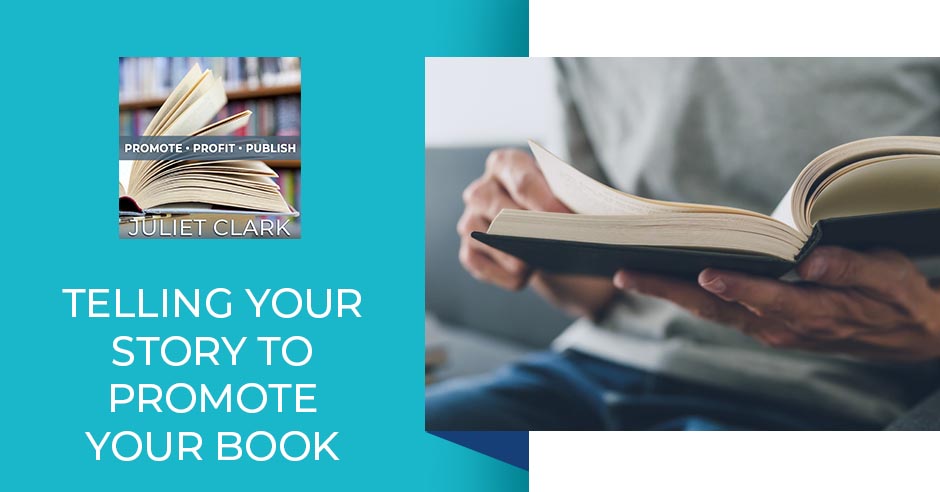
Your book is more than words on a page; it’s the story of your soul. For this episode, we explore the art of storytelling as a powerful tool for authors and speakers looking to promote their books and connect with their audience on a deeper level. Our guest, Aleya Harris shares the journey of transforming your personal narrative into a book-promotion powerhouse. She explores how the transition from content creator to a confident, personal storyteller can be a challenge for many authors and speakers and addresses the stage fright that often accompanies this transition. Aleya encourages authors to discover the core of your story and the unique spark that defines you, sharing her personal story from a place of postpartum depression and anxiety to becoming a beacon of energy and joy. Throughout the episode, Aleya discusses the essential keys to effective storytelling. It’s not just about telling your story; it’s about telling it right. Tune in now and take your journey from the stage to the page to a whole new level.
—
Watch the episode here
Listen to the podcast here
Telling Your Story To Promote Your Book
Before we get started with our fabulous guest, I want to remind you to go grab your copy, your free subscription of Breakthrough Author Magazine. You can find that at www.BreakthroughAuthorMagazine.com. We are switching up our focus on 2024 and our theme this 2023 is going to be Ditching the Middleman: Strategies to Bypass Book Distribution Fees.
For those of you who don’t know about book distribution fees, anytime you have your book listed on a distributor, Amazon, Barnes & Noble, or any of those, they take a 55% cut right off the top of your retail price. Once the book cost to print is pulled out of that as well, authors are left with very little product. Our focus is on how you sell these books on your own and ditch that 55%.
The other advantage of doing that is that you get to connect with your readers in a much more authentic way and start relationships, which can lead you to be in a space to nurture into bigger products and services. Please go grab that subscription. You’re going to be happy with some of our new contributors. One of them who’s going to contribute at large, not every month, but every now and then, is Aleya Harris.
Aleya is someone who, if you continue to make the journeys of your peers and idols, you’ll fade further into the sea of sameness. That is so true. Aleya Harris uses energy healing, business strategy, and her energetic personality to help you rediscover your passion, tell your radically authentic story, and stand out from the crowd.
She’s the CEO of the Evolution Collective Inc., host of the Radical Rebirth Retreat, LLC, host of the award-winning Flourishing Entrepreneur Podcast, and a Virgo with an Aries Moon and an Aquarius Rising. I have no idea about the last part. I know I’m a Pisces. If you met me in person, I probably am not wavy gravy like most Pisces. Stay tuned for our interview with Aleya.
—
Aleya, welcome. It’s great to have you here.
Thank you for having me.
I want to make everybody feel comfortable. I wanted to talk to you about authors when they’re out marketing their books and they’re speaking, and translating that into a storytelling journey that helps them sell the book instead of, “Buy my book.”
That’s the hardest part. I get on stage in front of hundreds or thousands of people, webinars, in-person, all over the things and I love it. I actually, honest to God, do not get stage fright. I was at this small retreat before the conference and I was invited because I was a speaker to participate in the retreat. There were twenty women there in the room. They were going around the room and everybody had to stand up and introduce themselves.
They didn’t say something personal, but that’s what we were doing. I was so nervous. My hands were shaking because it wasn’t about my content. All of a sudden, it was about me. I was up on not even a stage, I was sitting down. I had to stand up to talk for like twenty seconds and sit back down. It was then that I laughed at myself because I said, “This is the stage fright that everybody keeps talking about that they have.”
For authors and speakers, I am not alone in that. It’s very easy because you believe in what you’re talking about. You’re an expert and you have all of the credentials. Somehow, when we translate that to ourselves, we, all of a sudden, feel like we are not the expert in ourselves and we shouldn’t be talking about it or we get confused as to, “What story am I supposed to tell?” We’ve rehearsed our topics, we’ve rehearsed our book, and we’ve written books. Inside the book, all of our thoughts are there, laid out, edited, and published in this beautiful order.
All we need to do from the stage or when we’re selling it is say, “Here’s an excerpt, whatever.” It’s all thought out. As soon as we have to then apply that to ourselves, the person that people are buying, they’re buying the book, but they’re buying the piece of you because they can’t hold you captive in their basement. They’re trying to buy a piece of you and we don’t know what to say. There are a couple of things that I want to talk about when it comes to figuring out, as opposed to going, “You buy my book.” It’s like selling the you and people buy your book as an extension of you because they can’t get enough.
I love that you don’t get stage fright. I do for about 30 seconds and then I’ll snap out of it. I have this annoying thing from advertising when I talk that my slides are there so that I know where my place is. When you pitch an advertising, you take questions in the middle of your pitch. I will take questions in the middle of my talk and it’s annoying to people. I’ve got that 30 seconds where my lights are shaking and then, all of a sudden, it clicks in.
I am excited. It’s like a little puppy on stage, ready to see them transform because people go through some things in my talks. They have these emotional rollercoasters. We’re crying or laughing. It’s a whole thing. You might be getting up or you might be chanting. It’s a whole thing. I get excited about that. For me, it’s almost putting on a show. Way back in the day, I did tap, ballet, and jazz for ten years. I played the violin and the piano. A lot of that comes from the way that I approach being on stage.
Were you good at it? I played the violin.
I was very good.
I sucked.
I was not as great at the piano, but I was great at the violin.
The only time I was allowed to practice was when my parents were on date night because I was so bad they didn’t want to hear. Congratulations on being good at it.
That’s not very encouraging. I was good at it, but it felt like a lot of pressure. I didn’t continue it because it was more about how to get to the next thing and the next level, and so was the piano. Dance was more expressive for me. I like dancing now, but I don’t need to be on anybody’s stage doing the Nutcracker Suite or anything. I’d rather use my voice, but it taught me how to take up space on a stage and how to be engaging.
When I get on stage, it’s like second nature. I can move through any type of nerves and be excited. The only time that I get nervous is usually because the event organizer has hyped up the audience in such a way that makes me be like, “Are they going to even understand what I’m talking about?” They’re all accountants. They’re dry. They’re not going to give you any feedback. They’re like, “What am I getting myself into?”
I went up there and they were laughing and having a good time. They were raising their hands and were engaged. They were doing all kinds of stuff. The only time I get a little bit nervous is when I start feeding into other people’s hype. For me, when you’re trying to sell a book, you are the person selling the book or you are the person pitching yourself as a speaker, pitching yourself even for a podcast. You need to go a little bit deeper. You probably did some deep work in figuring things out to write the book depending on what the book is.
There’s also some work that you need to do to realize that the core of your story is your story. Not your book story, but your story. Underneath all the shoulds and the coulds and, “I did that, I’m blaming myself for this, and I’m judging myself for that,” there is a core of you. That is the story that people want to hear. The core of me is all about my self-created tagline, the spark for your spark. What I do well is channel energy from the universe, from God, from whoever you want to say and I channel it into people. When people leave me, they’re more lit up than anybody else. I didn’t realize that until after I had my baby. I had very severe postpartum depression and anxiety.
I’d be crying all the time. I’m also type A, so I’m crying, then walking out onto a stage. That’s what I was thinking. That’s where we’re at. Even at that, people would walk up to me, “I love your energy. You’re so full of vibrancy. You’re so full of joy.” That moment was when I realized that it had nothing to do with me because I, Aleya Harris, this body was sad, depressed, anxious, and feeling battered down.
That was when I got into the core of me. It was like my purpose, which is to be the light bearer. I’m not the light generator. I’m a light bearer bringing it to other people. In order to get there, I had to uncover the, “Who do you think you are? How can you be a light bearer? What does that even mean? Are people going to understand? Do you remember that one time when you weren’t that light bearer? Doesn’t that prove that you aren’t?” It is all that stuff that is on top of the core of who I am.
When you’ve gotten there down to the core story, for me, I look around at my life, I’m like, “That’s why I’m doing this. That’s why I’m on this path. That’s why I open up this business. That’s why I tell these stories. That’s the feedback that other people get from me.” I joke around with people who hire me to be a speaker that I promise all my testimonials are real and that I didn’t ChatGPT them because almost all of them say, “We love your energy. We love Aleya. She had such great energy. This energy over the presentation was good. Her enthusiasm is contagious.”
It literally sounds like I went and did these and made fake names because they all are saying the same thing. Why are they saying that? It’s because that is related to the core of who I am. It’s that light, vibrancy, joy, and connection that I bring to people, and I have to own that. Dear reader, what are you not owning? What are people talking to you that you’re brushing off? What are all of the shoulds and the judgments preventing you from owning?
If you can own that core of you, you’ll be able to feel as confident telling your story, which is going to be very different than everybody else’s, just the same way that you are confident owning the content in that book. The difference is the book is edited. All the other people have their fingers on usually before it’s in print.
People don’t have their fingers all on you usually in the best of ways before you present this core of you. It feels very vulnerable. It feels like you’re looking for validation. As opposed to looking for validation externally, what I encourage you to do is to look for validation internally using your body as a guide. In this storytelling process, the story of you, you get down to the core of who you are by doing forgiveness work, journaling, freeform writing, and removing all the should.
Pay attention to the signs of where you’re on and off course. You then start to say, “I feel like I know what that is, but am I right or not?” You already know what right feels like. Juliet, if I told you, imagine that I wrote a check now and I got a big client. I am a super big fan of you, Juliet and I wrote you a check for $100,000 and sent it to you in the mail and you’re looking at it now. How would you feel?
It’s like I won the lottery.
Where do you feel that in your body?
I would feel that in my smile.
Your face would light up. It is in their face or their chest. You feel it somewhere. Not to be a downer, but Juliet, I know you live on a golf course. I’m a doctor and I hate to break it to you, but the way that your thumb is working, you’ll never be able to golf again. Where do you feel that?
I would be very sad. It would probably feel in the pit of my stomach like that’s something I love to do.
That’s an oh-no feeling. Your body physically knows what yes feels like and physically knows what no feels like. You can run a couple of scenarios. I love using the scenario of, “If a former client sent you a Louis Vuitton purse as a thank-you gift, where would you feel that?” I said, “All over, baby.”
I’m rubbing it all over myself.
I feel it everywhere. I’m glowing. You run different scenarios in those types of situations. You feel like what no or yes feels like. If you can’t run those scenarios on yourself, watch a movie that makes you laugh and a movie that makes you cry and feel physically, somatically, where that is in your body. Once you got down to what a yes feels like and what a no feels like, talk to yourself about the core of yourself. Where do you feel that? Does it feel like, “That is right. That is me.” There are lots of iterations I went through before I was like, “I’m the spark for your spark. I have this energy thing going.” I don’t remember what they were, but they were not it. I didn’t feel anything.
When I was younger, I used to have a Sidekick. It’s a type of phone. Every time it would die, it made a sound. It wasn’t a no or a yes. That’s also good feedback. When you light up, when you tell yourself the core of who you are, it’s not about the pretty wording, but you’re like, “What I’m here to do is truly to help people connect with their grief to release it. What I’m truly here to help people do is to realize their potential through dance. What I’m truly here to help people do is to understand that their biggest weaknesses can be their biggest strengths.”
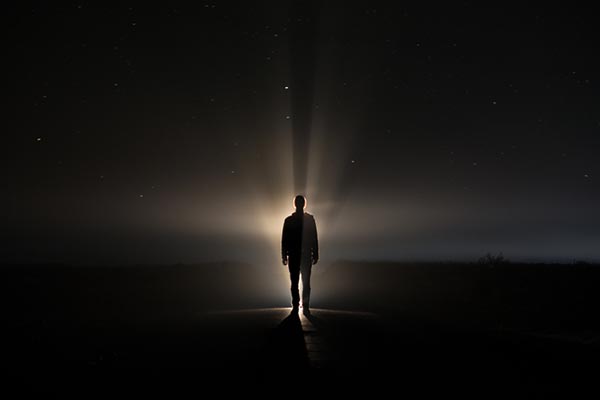
Storytelling: “What I’m truly here to help people do is to understand that their biggest weaknesses can be their biggest strengths.”
I’ve seen that. I feel that. When you feel the yes feeling, you got it. You don’t need an editor to tell you that you got it. You don’t need reviews to tell you that you got it. You will know. You’ll then begin to connect the dots in your past and then help you navigate your future on how you’re going to walk this out now that you’ve gotten more accustomed to being in touch with the core of who you are.
Let me ask you a question. For a lot of people, that’s a scary thing. I get a, “Yes, that’s my story, but I’m ashamed to tell that story.” What do you recommend? It sounds like if you want to tell your story, you’ve got some work to do.
If you want to tell your story, you do have some work to do. I didn’t say, “I guess I probably should have started this.” I didn’t say it was easy. Writing the book wasn’t easy. Why should this part be easy?
This is probably harder because if you’re working with a book developer, that book developer is guiding you through where you got too much story or you need to elaborate. This is something that truly comes from you and you’re communicating it not in a book where you’ll never see a reaction, but in front of people who are going to react.
Going back to what you were saying about the guidance, you don’t want validation, but if you do need guidance, I encourage you to get a coach. Get a life coach. That’s their jam. They can help guide you to the closer to the core of yourself. Shameless plug, I do bioenergetic business coaching. Come holler at me. Once you talk about, like you’re saying where you have this and now what do you say, then you start getting some structure to this thing. I like to talk about how you get the real core of who you are. You get clear on what that is and then you get connected. For the getting connected piece, I like to use the StoryBrand framework for that.
I’m a StoryBrand certified guide. The StoryBrand framework is the hero’s journey simplified and put into different contexts. There’s a hero who has something that they want. They have a problem. They meet a guide who has a plan that calls them into action that helps lead them to success and avoid failure. In that framework, you can pull out certain pieces of that to communicate the core of who you are into a nifty little one-liner.
It’s the problem that you solve, the way that you solve it, and then the results that you get, the success that you help other people get at the end. Let’s say I wrongly came up with that. My core of who I am was to paint watercolor kittens for a living. The core of who I am, my soul, is painted in watercolor kittens. I don’t know about you, but there’s a very small watercolor kitten community. I don’t imagine. It’s like a large overarching human theme here.
Aleya, I’m a painter, so I will find one for you.
Please do. If that is the thing, you’re like, “That’s who I am,” but if you’re not matching it to a problem that needs to be solved, then no one’s listening to you. That’s probably not the core of who you are. This is getting a little bit grander of thought, but the beautiful thing about the core of who you are is you’re given the gift and the purpose of who you are because human beings are meant to be in communication and community with other people.

Storytelling: The beautiful thing about the core of who you are is you’re given the gift and the purpose of who you are because human beings are meant to be in communication and community with other people.
Once you get to your core, it’s automatically you getting down to something that someone else needs or wants. That’s why it’s within you in the first place. If you’re stuck at the watercolor kitten level, keep going. You haven’t finished up one yet. Let’s say that you have gotten down to your core. Let’s talk about, at the core of me, I am an alchemist. I do transformation for people who believe that they can’t do something and I help them flourish beyond their wildest imagination.
Let’s say that you are a people and a pain alchemist. That is your jam. I’ve known people like that and they’re very powerful. You don’t necessarily come out and say, “You got some pain? I’m going to transform it for you.” I guess it depends on who you talk to. You then talk about, “If I’m a people and a pain alchemist, what problem are people seeing and living in their lives every day that they can very easily understand that I can use to communicate with them?”
Let’s say then you lean into people who’ve had a seriously debilitating illness, for example. The problem that you solve is helping those who have been seriously physically disabled overcome mental blocks to continue to flourish past their disability. That’s the problem that you solve. The solution, the way that you solve it in the middle, is through, “My ten-step proprietary program.” I don’t know what your solution is, but it’s a thing. You name it, the thing. I get results that people are able to transcend the physical and their minds suddenly become the strongest muscle in their body or something like that. I don’t actually know if your brain is a muscle, but something like that.
You have your problem, your solution, and your result, but a lot of times, people go one way or the other. They have problems that nobody actually wants the solutions to, or they’re solving problems that everybody wants to solve, but every time they solve it, they die inside because it is not connected to the core of who they are.
You have your problem, your solution, your result, but it's not a lot of times people go one way or the other. Share on XIn order to build something that people gravitate towards and that people can feel that people want to be around, you have to solve a problem that is connected to the core of who you are that you are motivated to get up and solve it in new and innovative ways on a daily basis. Spoiler alert, most likely, your book probably fits already right into that. When you’re talking about this overarching problem solution result of you as a human telling that story, then you can say and then get a snippet of the story where maybe, “I solve this part of it. Maybe I talk about this segment of it. Come read my book.”
Also, to be able to communicate that on stage in a way that people can relate to as well. I love that I see more and more people doing this. I tend to try to make people laugh because I feel like laughter opens up whatever defenses you have. You and I are both part of the Dames. A lot of the ladies in the Dames have taken comedy lessons.
I didn’t know that. That’s funny.
Jen’s hilarious. You know Megan. Megan’s hilarious too. They’ve actually cultivated that because they understand that it lowers defenses. Now I have my story, but now I’m putting it out there in a way that’s going to lower defenses so people are open to purchasing whatever I have.
It’s another way of making the connection. Another great way of telling a story to make the connection is time and place, setting the scene. You can talk about this, especially with your fiction background. You can’t tell a story in the ether. You have to have people be able to visualize it. I’m going back to this hypothetical mythical person that I made up who is this alchemist of people with physical disabilities to help them recapture their sense of freedom through mindset work. Let’s say that that’s who this person is.
Another great way of telling a story to make the connection is time and place. Setting the scene. Share on XMaybe they had their own physical disability experience. Maybe from the stage, they start off by saying, “It was December 2019 and all I could feel was the blood running down my face and nothing else. I had no idea how I got there. I had no idea what had happened to me, but I had this feeling in the pit of my stomach that everything had gone wrong.”
We fast forward to three days before. “I was a normal accountant going about my normal life and about to marry my fiancé of five years. Everything came to a crashing halt at that moment. I lost my job and my fiancé and it was the lowest point of my life because I also lost my legs. I thought that that was where my story ended. Until one day in rehab, I had a physical therapist come to me and say, ‘Your body is only part of your identity. What about the rest of the muscles that you need to work?’ I began my journey to developing the mindset lessons I’m going to teach you so that you can experience the freedom that has nothing to do with the physical that I experienced.”
I am listening to that man or woman talk for the next hour and a half if they want to talk. I’m interested. I saw the blood. I saw the crash. I saw them in their normal life as an accountant. I saw this fiancé. All of a sudden, you hate the fiancé for leaving the person, even though we don’t know what. You feel it. You’re with them. You’re in the story. You also notice there was a problem, there’s a solution, and there is a result.
Let me ask you this. A lot of times, when we write marketing pieces, we have to stop our people and say, “No one cares about your process.” They’ll go into the story with, “This is my front story,” and then they get into the process and the process is this big. “I do it in this proprietary way,” and people are falling asleep. How much of that story should be the process? How in-depth should that process be? You could put people to sleep with that process that they don’t give a damn about. They just want the result.
A process is only three steps. I don’t care how many steps are in your process. I don’t care if there’s 25, and I don’t care if there’s 25 million. There are three steps. Those three steps are how I engage with your process, the generalized work that happens in the middle, and what success looks like for me, the listener, from that process. I don’t care how many patents the process has, I don’t care how many years it took you to develop, and I don’t care if your grandpapa was the originator of the process. Whatever you do is framed in the perspective of the person who is listening to you. Notice the very short version I gave a little earlier. It was like, “This proprietary process,” and that was it.
Whatever you do is framed in the perspective of the person who is listening to you. Share on XAll I want you to focus on the problem and to hook you in that I have something that’ll help you in the middle and what you’ll get in the end. When I’m on stage and I’m talking you through the process, I’m like, “Now I’m going to tuck you my mind techniques.” Those are all about me learning something. It might be that you’re taking me through a sample of your process, but it’s not about you describing the process. It’s about you showing me how to use tools to help me out. You said no one cares about your process. I’m going to take it a step higher, Juliet. No one cares about you.
You bring up a good point there, too, about the process. You could take those three steps you gave us as part of that sales process and set expectations for that person. There’s also a sales piece going over that process as well. The other thing I was going to say is what you’re describing. What every author has to learn right off the bat is show, not tell.
I’m going to get on a soapbox. It’s a little one. Most speakers are bad. I sit and I go to conferences and I’m like, “Who the heck vetted you?” It’s not because I don’t know what they’re talking about. These are heads of huge companies. They have a lot of knowledge to share. It’s because they’re telling me stuff that I could have read in a blog post.
Respect the craft. When you are using a certain medium, you have to abide by the rules of that medium. Speaking on a stage is a medium of information delivery, but it’s not about staring at someone on stage. It’s about having an experience, making a connection. If I wanted the information that someone had, I would read their book or I’d go and watch a movie about it or I’d go and read a blog post.
I am there in the room looking for a connection. I don’t care if I’m an accountant, an engineer, a doctor, or a meditation coach. I am sitting in front of you expecting you, the speaker, to make a connection with me. If you’re not doing that from the stage, you are doing it wrong. Yes, it’s about show not tell, but it’s so much broader than that. Every facial expression, every body movement, and every voice modulation should be illustrating a point to draw me in and engage me into a connection with the story, with the person, and with the result that I’m purporting to give you from the stage. That is how you speak. Off of my soapbox now.

Storytelling: Every facial expression, move it. Every voice modulation should be illustrating a point to draw me in and engage me into a connection with the story.
This has truly been a great gift of information. If we wanted to work with you, where would we find you?
You can connect with me at AleyaHarris.com. Same thing on Instagram, @AleyaHarris. I’d love to speak with you and then, if you’re fancy, I’m also on LinkedIn. I actually am on LinkedIn a lot.
How about if you’re employed?
Actually, a lot of people on LinkedIn are not employed. That’s why they’re on LinkedIn.
That is very true because I get those notices nearly daily. “Are you hiring?” “No.”
“I’m not, but I see that there must be a huge need out there.”
Thank you so much. This was fun.
Thank you, Juliet.
Important Links
- www.BreakthroughAuthorMagazine.com
- Aleya Harris
- Evolution Collective Inc.
- Radical Rebirth Retreat, LLC
- Flourishing Entrepreneur Podcast
- @AleyaHarris – Instagram
- LinkedIn – Aleya Harris
About Aleya Harris
 Aleya Harris, CPCE is the spark for your sparkTM. She is a powerhouse StoryBrand Certified Guide, BioEnergetic Business Consultant, empire-building CEO of The Evolution Collective Inc., host of the Radical Rebirth Retreat, LLC, host of the award-winning Flourishing Entrepreneur Podcast, and international award-winning speaker. She’s committed to helping entrepreneurs, executives, leadership teams, and thought leaders differentiate themselves through radically authentic strategy, coaching, and training.
Aleya Harris, CPCE is the spark for your sparkTM. She is a powerhouse StoryBrand Certified Guide, BioEnergetic Business Consultant, empire-building CEO of The Evolution Collective Inc., host of the Radical Rebirth Retreat, LLC, host of the award-winning Flourishing Entrepreneur Podcast, and international award-winning speaker. She’s committed to helping entrepreneurs, executives, leadership teams, and thought leaders differentiate themselves through radically authentic strategy, coaching, and training.
Love the show? Subscribe, rate, review, and share!

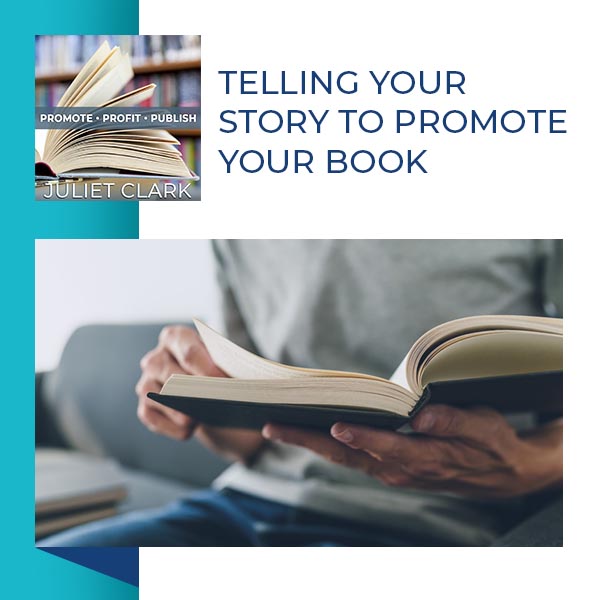


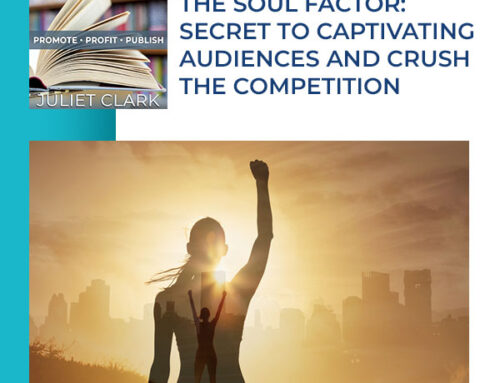
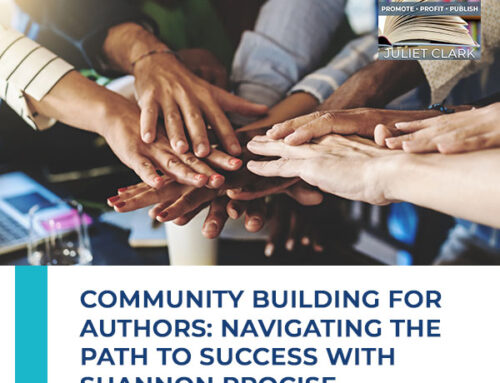
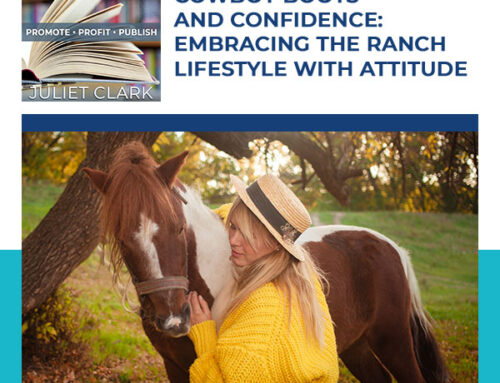


Leave A Comment